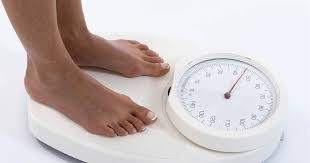In this article, we’ll explore what it means to embrace whole wellness, focusing specifically on physical health and well-being, and discuss actionable steps women can take to achieve a healthier, more balanced life.
Understanding Whole Wellness
What Is Whole Wellness?
Whole wellness is the integration of the mind, body, and spirit to achieve optimal health and well-being. For women, this means addressing not just physical health but also the unique challenges and responsibilities they often face, such as hormonal changes, caregiving roles, and societal expectations.
The Role of Physical Health in Wellness
Physical health is a cornerstone of whole wellness. When a woman takes care of her body, she is better equipped to handle life’s challenges, maintain emotional balance, and pursue her goals. Good physical health enhances energy levels, boosts confidence, and supports longevity.
Key Components of Physical Health for Women
1. Nutrition
A balanced diet is critical for maintaining physical health and preventing chronic diseases. Women have specific nutritional needs that vary depending on their age, activity level, and life stage.
2. Regular Exercise
Physical activity is essential for maintaining a healthy weight, improving cardiovascular health, and enhancing mental well-being.
3. Sleep and Rest
Quality sleep is as vital as nutrition and exercise. A lack of sleep can affect energy levels, mood, and overall health.
-
Importance of Sleep:
- Supports immune function and hormone regulation.
- Helps the body recover from daily stress and physical exertion.
- Improves cognitive function and emotional resilience.
-
Tips for Better Sleep:
- Maintain a consistent sleep schedule, even on weekends.
- Create a relaxing bedtime routine, such as reading or meditating.
- Limit caffeine and screen time before bed.
4. Preventive Healthcare
Preventive care is a proactive approach to wellness, allowing women to detect and address health issues early.
Unique Physical Health Challenges for Women
1. Hormonal Changes
Women experience various hormonal fluctuations throughout their lives, from puberty and menstruation to pregnancy, postpartum, and menopause.
-
Common Concerns:
- Premenstrual syndrome (PMS) and menstrual irregularities.
- Pregnancy complications and postpartum recovery.
- Hot flashes, mood swings, and bone density loss during menopause.
-
Solutions:
- Work with a healthcare provider to manage symptoms through diet, exercise, and, if necessary, medical treatments.
- Practice stress management techniques like meditation or deep breathing.
2. Reproductive Health
Reproductive health is a significant component of physical wellness for women. Conditions like polycystic ovary syndrome (PCOS), endometriosis, and infertility can affect physical and emotional health.
- Tips for Reproductive Health:
- Track menstrual cycles to identify irregularities.
- Maintain a healthy weight, as it can influence hormone levels.
- Consult a specialist for any persistent issues, such as painful periods or difficulty conceiving.
3. Bone and Joint Health
Women are at higher risk for osteoporosis and arthritis due to hormonal changes and lower bone density.
- Preventive Measures:
- Include calcium-rich foods like dairy, leafy greens, and fortified cereals.
- Perform weight-bearing exercises such as walking or resistance training.
- Avoid smoking and excessive alcohol consumption, as they weaken bones.
Mental and Emotional Well-Being’s Connection to Physical Health
Physical health and mental health are deeply interconnected. Chronic stress, anxiety, and depression can manifest as physical symptoms like fatigue, headaches, and digestive issues. Conversely, poor physical health can exacerbate mental health conditions.
- Stress-Reducing Practices:
- Regular exercise releases endorphins that improve mood.
- Mindfulness and meditation can help manage stress.
- Prioritize self-care and seek professional support when needed.
Building a Holistic Wellness Routine
Whole wellness requires a balanced approach that integrates physical, mental, and emotional care.
1. Set Realistic Goals
Focus on small, achievable changes rather than drastic measures. For example, start by adding one extra serving of vegetables to your meals or walking for 10 minutes daily.
2. Stay Consistent
Consistency is key to building lasting habits. Make time for regular exercise, meal planning, and self-care, even during busy periods.
3. Build a Support System
Surround yourself with people who encourage your wellness journey. Whether it’s a workout buddy, a support group, or a healthcare professional, having a network can keep you motivated.
4. Listen to Your Body
Pay attention to physical and emotional signals from your body. If you’re feeling fatigued, take a rest day. If something feels off, don’t hesitate to seek medical advice.
The Power of Self-Compassion
Embracing whole wellness isn’t about perfection—it’s about progress and self-compassion. Women often juggle multiple responsibilities, and prioritizing wellness can feel challenging. Remember that taking care of yourself is not selfish; it’s essential for being your best self in every aspect of life.
The whole woman and her whole wellness encompass more than just physical health—it’s about creating a balanced, fulfilling life. By focusing on nutrition, exercise, sleep, preventive care, and self-compassion, women can take charge of their physical health and lay the foundation for overall well-being.
By prioritizing these elements and recognizing the interconnectedness of mind, body, and spirit, women can achieve a state of wellness that empowers them to thrive in every aspect of life. Start small, stay consistent, and remember: you are worthy of investing in your health and happiness.







